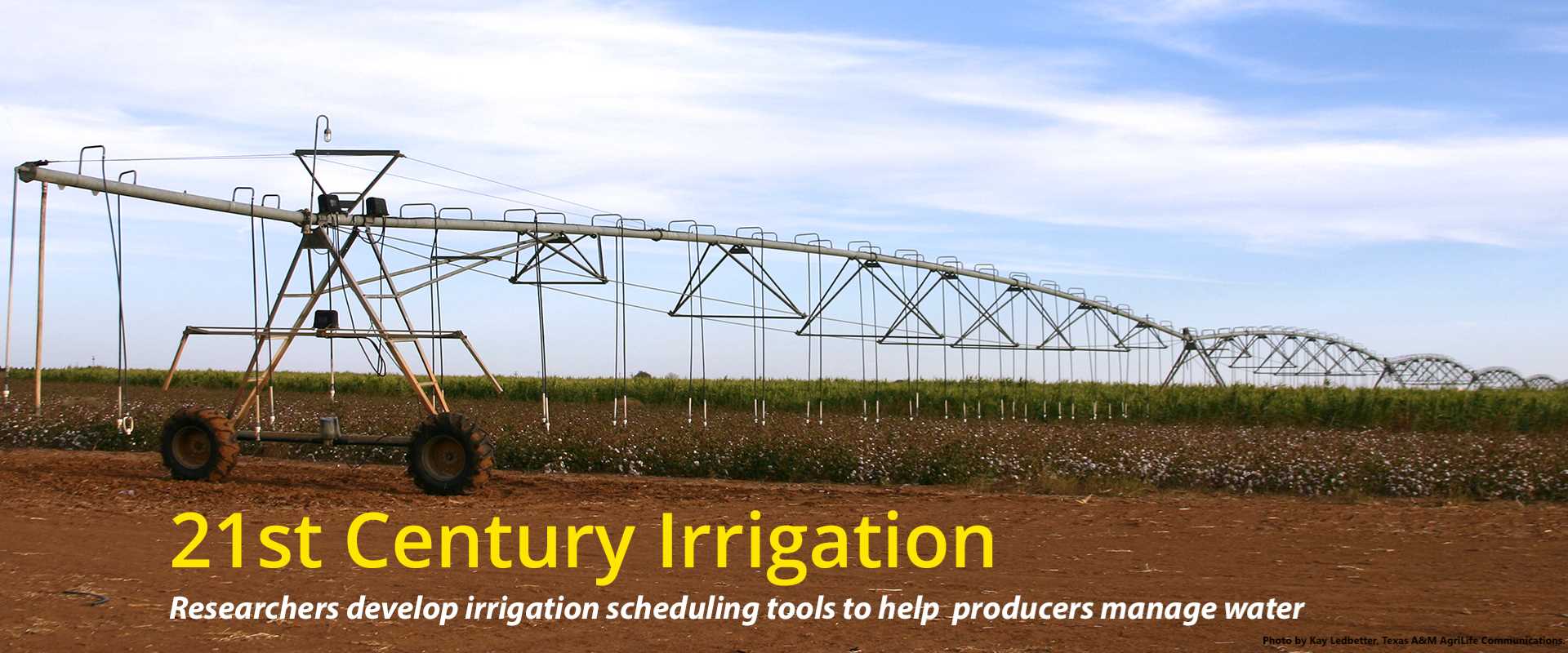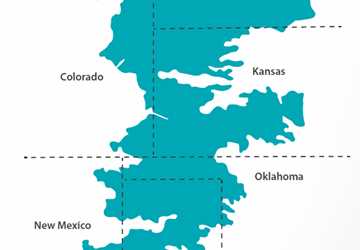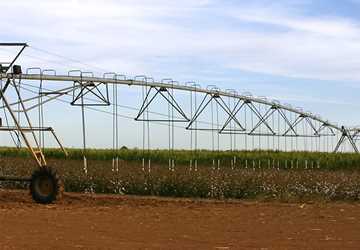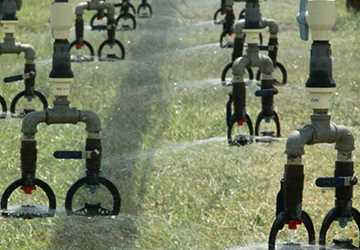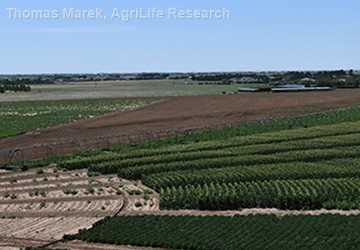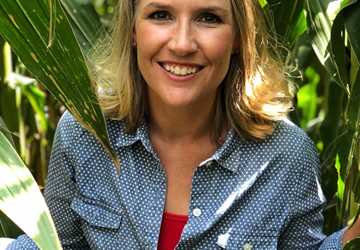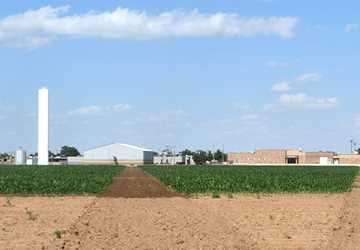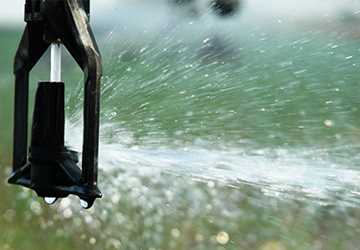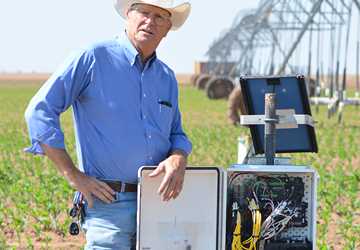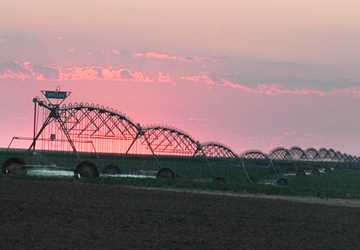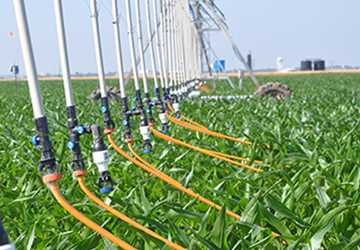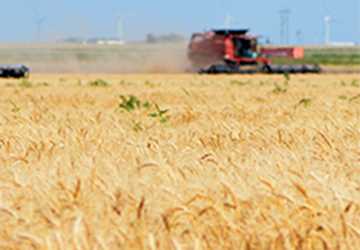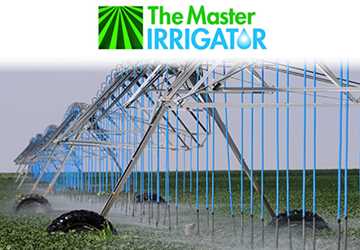A producer who controls irrigation using a smart phone. A spreadsheet that uses weather data to predict when to water crops. Sensors that read how much water is in the soil. While some technologies may seem farfetched, especially in an agricultural context, they have been an integral, yet underused, part of water management for years.
Producers have long struggled with challenges in their irrigation practices. From water availability and unpredictable weather patterns to regulations from outside entities, it can be a challenge to irrigate crops.
Researchers from the states over the Ogallala Aquifer are working on new water management technologies to help producers irrigate more effectively and save water resources. These tools, which could conserve millions of gallons of water, will become vital to success as the population grows and water availability dries up, researchers said.
Using smart, precise technology to irrigate
The Dashboard for Irrigation Efficiency Management (DIEM) is a software tool that helps producers schedule field-specific irrigation that optimizes yield and water-use efficiency based on rainfall and irrigation availability. While other irrigation scheduling tools are available, the DIEM is unique because it looks at the available water and plans for the entire growing season, said Jim Bordovsky, agricultural engineer and senior research scientist at the Texas A&M AgriLife Research and Extension Center in Lubbock and one of the developers of the tool.
Researchers from the states over the Ogallala Aquifer are working on new water management technologies to help producers irrigate more effectively and save water resources.
More information
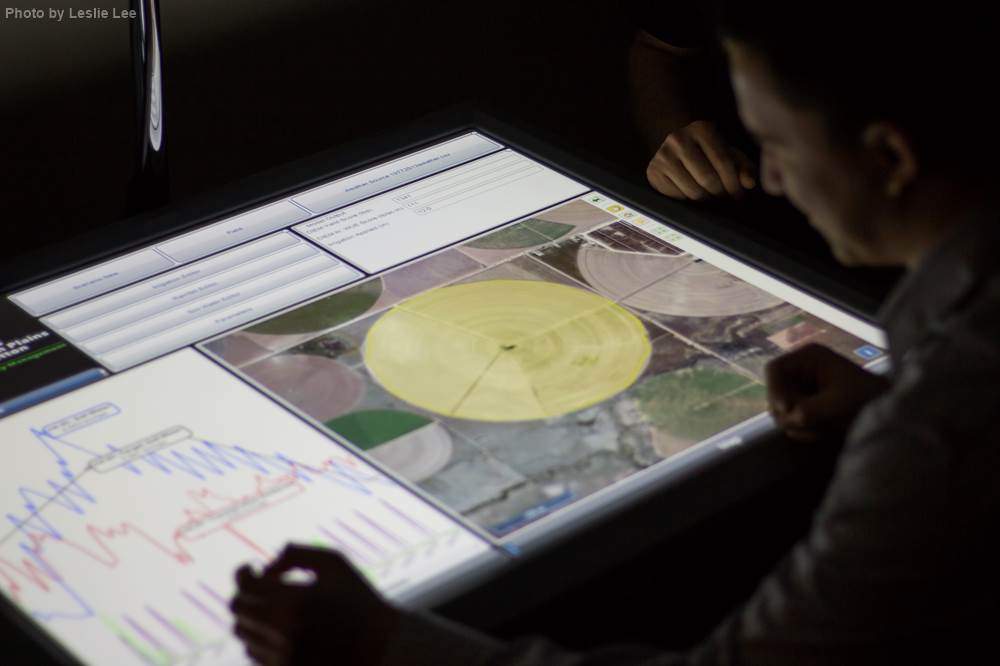
DIEM uses evapotranspiration data — the amount of water lost through transpiration by the plant and evaporation — to make predictions about when the producer should irrigate. The program also uses historical, almost real-time and future information from weather, soil and the crop being grown to recommend irrigation schedules, according to the DIEM website. Bordovsky said future developments will allow the program to include soil moisture sensor information to help with the accuracy of predictions.
Bordovsky said a four-year study that looked at irrigation timing and the effects it had on cotton crop yields led to the development of DIEM.
“The tool works by helping producers with limited irrigation capacity determine the best time to water their crops to obtain the greatest crop yield with the least water,” he said.
The original software tool is available online and requires a computer and internet access to work. In spring 2018, a mobile application was released. It can be used on smart phones with internet access. “The addition of a mobile application makes it easier for producers to access the tool when they are in the field,” Bordovsky said.
By using DIEM, Bordovsky said producers are able to plan for the coming season and back up their intuition and experience with quantifiable data. “This tool gives producers the confidence that the decisions they are making are correct.”
The tool works by helping producers with limited irrigation capacity determine the best time to water their crops to obtain the greatest crop yield with the least water.
While DIEM is an effective tool, it is not the only technology that uses evapotranspiration data to assist producers.
Researchers in Kansas have developed KanSched, an irrigation scheduling program that also uses evapotranspiration data to determine the ideal watering time for crops. KanSched was first developed in the early 1990s as an Excel spreadsheet. Currently, KanSched is available online without a desktop program. KanSched is used as a backbone by other mobile applications to build their scheduling applications, but a KanSched mobile application has not yet been developed, said Dr. Jonathan Aguilar, assistant professor and extension water resource engineer at Southwest Research-Extension Center in Kansas.
“There is less clicking [on the computer] and more swiping [on a smart phone] now,” Aguilar said. “This makes the need to develop a mobile application more urgent.” Aguilar said the program was developed for Kansas but it is applicable in other states and abroad, adding that requests have been made for a metric version.
Aguilar said the reason for KanSched’s popularity is the producer’s ability to know when they need to irrigate based on the tool’s ability to estimate how much water is still in the soil profile. KanSched uses evapotranspiration data, the crop type and irrigation amount to guide the user toward the best water management step. Recent versions of KanSched make it easy to input rainfall and evapotranspiration data, allowing producers to easily manage multiple fields in the program.
“Communication between producers and extension researchers helps improve KanSched,” he said.
When the program was first developed, Aguilar said extension researchers were able to work with producers to teach them how to use KanSched and a personal computer, simultaneously. This relationship helps producers use new technology to better manage their crops and keeps extension researchers updated on producer concerns. The program was developed to be user-friendly enough that anyone could use it to schedule irrigation.
“The name came from ‘anyone can schedule’ shortened as KanSched, which conveniently ties in with the state where it was developed, Kansas,” Aguilar said.
This play on words reminds producers that scheduling irrigation and using best management practices with KanSched is as simple as a click on the computer.
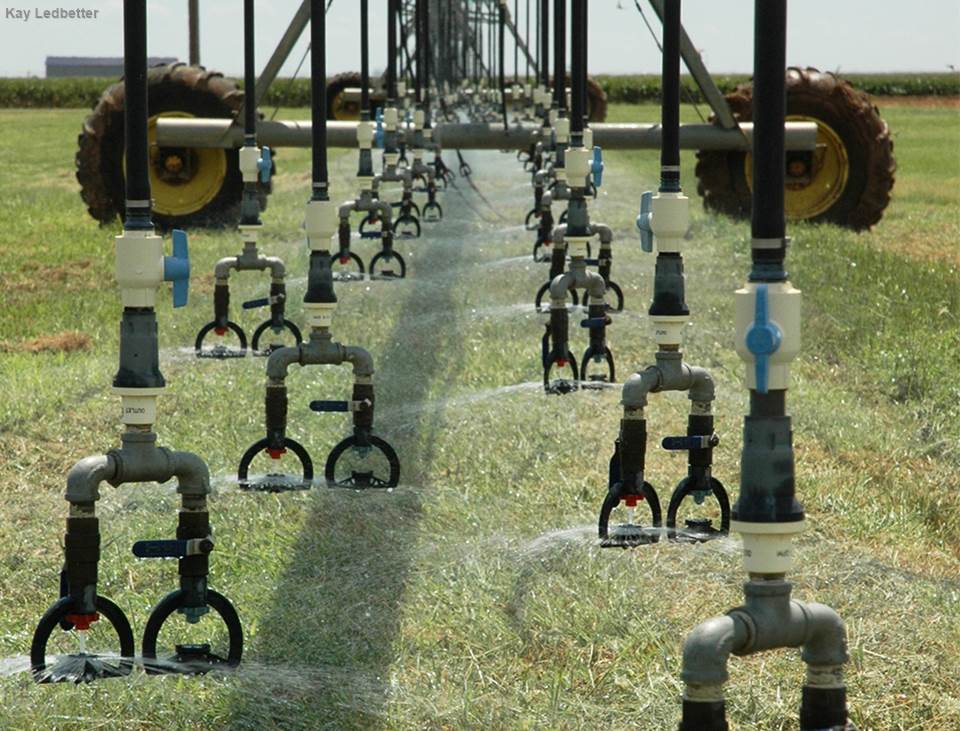
There is less clicking [on the computer] and more swiping [on a smart phone] now. This makes the need to develop a mobile application more urgent.
While a mobile app is in the works, other technologies have already established a mobile platform.
The Water Irrigation Scheduler for Efficient Application (WISE) was developed in Colorado to assist producers with improving irrigation water management, according to its website. Since 2014, WISE has been available online and as a mobile application.
WISE uses field capacity, wilting point and a threshold soil water level between the two to determine the irrigation schedule. Field capacity is the maximum amount of water the soil can hold after natural drainage. Wilting point is the minimum amount of water at which the plant leaves droop (wilt).
Soil moisture deficit, the difference between field capacity and the actual amount of water in the soil, is also used.
A study on the impacts of WISE found less water usage after implementation. The study, conducted over three growing seasons between 2010-2012 in a sprinkler-irrigated corn field, showed that in 2011 the total irrigation was reduced by 27 percent. The producers used more water when they did not use WISE, according to the study by Dr. Allan Andales, associate professor and extension specialist in irrigation and water science at Colorado State University.
Early in its development, WISE went through many rounds of stakeholder testing and feedback. This information helped researchers make the program more user-friendly and accommodate producer needs. In 2016, WISE won the Educational Materials Award for Digital Decision Aids from the American Society of Agronomy. In 2018, it received an Educational Aids Blue Ribbon Award from the American Society of Agricultural and Biological Engineers.
Going forward, continued feedback helps researchers improve WISE so that more water can be conserved through irrigation practices.
As technology grows and conservation becomes “smarter,” it is vital to obtain accurate readings from the soil.
Sensing soil moisture
Researchers and producers use soil water sensors to better estimate water available to plants and help with irrigation scheduling. While using these sensors properly can be challenging, the information learned through research is applicable in the field for producers today and in the future.
Dr. Robert Schwartz, soil scientist at the U.S. Department of Agriculture’s Agricultural Research Service Conservation and Production Research Laboratory in Bushland, Texas, said one of the factors affecting the lack of sensor use by producers is the need for sensor calibrations specific to soil conditions in a field. Sensors must be calibrated to match the soil type; otherwise, moisture readings can be misleading. Research into developing calibrations for different soil types helps improve sensor accuracy. Soil type, including the amount of clay in the soil, temperature and electrical conductivity of the soil can all affect soil water sensor accuracy, he said.
“Another challenge is that having data from a few installed soil water sensors may not be representative of the quantity of water within the soil profile throughout the entire field, which can cause considerable uncertainty in determining the available water for crops and scheduling irrigation,” Schwartz said.
One benefit of using soil water sensors is the ability to observe how deeply irrigation and rainfall moves into the soil and the pattern of daily crop water use. Schwartz said other monitoring systems and programs cannot give a daily picture of the available water status; this is where soil water sensors can excel. The ability to see how water is being used by crops and then replenished by irrigation is valuable, real-time information that can only be approximated by other systems, he said.
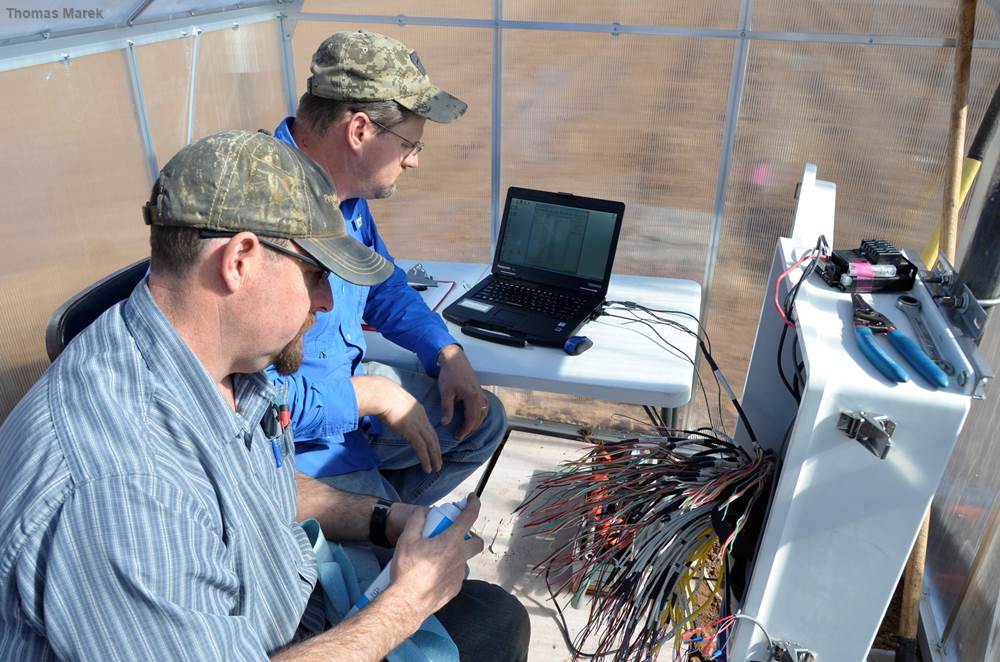
“Currently, using soil sensors for scheduling irrigation may not be practical for producers because of accuracy concerns, but continued research and advances will help soil sensors become a more widely used tool in the quest for water conservation in irrigation,” Schwartz said.
To get the clearest picture, it is still important to use many different tools when irrigating, he said.
“Soil water sensing should be integrated with other water management technologies for the best results,” Schwartz said. “We should always try to avoid using a single technology to manage irrigation.”
Continued research and advances will help soil sensors become a more widely used tool in the quest for water conservation in irrigation.
Nothing replaces common sense
From mobile apps to spreadsheets and sensors, irrigation is becoming more technologically advanced by the year. Researchers are working on cutting-edge technological assistance to increase crop production and help producers conserve water, while making these technologies user-friendly and accessible.
“These irrigation technologies have been around for many years, but the adoption rate of soil and plant technologies by producers is very modest,” said Dr. Saleh Taghvaeian, assistant professor and extension specialist at Oklahoma State University. “The value of demonstrating to producers how these tools operate and can prevent unneeded water use is important for increasing adoption.”
Technology is certainly helpful, yet it is still fallible. The sentiment echoed by the researchers is that many different technologies working together is always better than one, but sometimes the best tools are the producers themselves.
“Nothing can substitute going out into the field and seeing what is going on,” Schwartz said. “You could think that sufficient water is available to crops based on sensor readings, but then go into the field and realize that the area where the sensors are installed is an anomaly and the rest of the field is being under-irrigated.”
Explore this Issue
Authors
Alexandra was a graduate communications intern for the Texas Water Resources Institute, providing assistance to the communications team with the institutes’ publications, including Conservation Matters and txH2O magazine.

